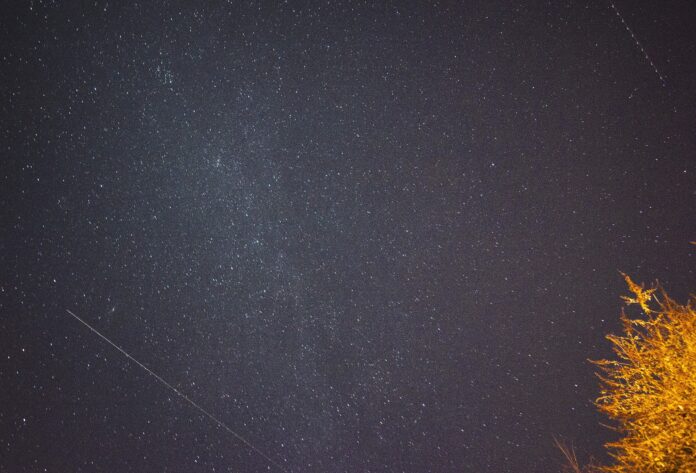The Delta Aquarids meteor shower begins this week, but peaks on the night of July 30. The Brownsville Southmost Branch public library and the South Texas Astronomical Society are co-hosting an event on Sept. 15, from 7 to 9 p.m. to call attention to the meteor shower.
The bits of comet debris from Comet 96P Machholz which create this meteor shower, enter earth’s atmosphere about 90,000 mph and are vaporized, sharing the spectacle of sky fireworks we call shooting or falling stars. They are not stars at all, but it is far more interesting to call them that than dust particles. Discovered in 1986, this comet has a periodicity of an every 5-years visit that leaves traces of its orbital path through our solar system. Contact the library for details.
All meteor showers are debris left in the original orbital path of either an asteroid or a comet; earth passes through those trails on a regular basis. The chance of seeing a meteor shower related to the Delta Aquarids is between July 12 – Aug. 23 so whenever the Moon is out of your view, be sure to look south for a possible falling star to put in your memory pocket.
There is something marvelous and magical about the experience. For this one, 3 a.m. the morning of July 30, looking south towards Jupiter and the constellation Aquarius will be the peak, but of course, that waning gibbous Moon will put a damper on all but the brightest meteors streaking across the sky.
Venus is gracing the early evening sky in the west at sunset, and sinking quickly out of view by 10 p.m. as Earth is rotating from west to east to bring Earth’s continents the day and night we experience.
Summer nights are very brief and at the far north there are places where the Sun does not sink out of sight, while at the far south the Sun does not appear above their horizon. Gotta’ love that tilt. Otherwise, there would only be one season for any given area on the Earth’s surface. Whatever we have for spring and fall would be what we had all year ‘round.
We have had so many cloudy nights recently it has been a bit challenging to do sky watching. The Moon is always a special target for astronomers and the phases leading up to the Full Moon and New Moon are best for exploring its surface. Our Moon and the planets in our solar system, seem to travel along a path in the sky called the ecliptic.
The north pole area of Luna has multiple craters that have been named after famous explorers of Earth. Some of the craters are Peary, Nansen, and Byrd-names you may easily recognize. Searching Luna can bring some exciting questions to mind that you just might want to further explore and research.
Any spherical shape will always have portions of light and shadow that vary with the amount of light on its surface so it is not surprising that Venus’ phases will be visible with a decent telescope.
This week Venus crosses into the constellation Leo and it is joined by the two-days- old crescent Moon and Mars. I hope we have clear skies to see this. Although Mars and Venus will appear to be very close, actually Mars is about 1 astronomical unit (au) from Venus.
An au is about 93 million miles and is the unit used to measure distances in the solar system, the average distance that Earth is from the Sun. Venus is about 1.4 au from Earth.
If you attend the Lunada in Brownsville this month, you may find a chalk model solar system to walk and explore the relative (not really to scale, but fun anyway) distances between the planets in our solar system.
Until next week, DO let some stars get in your eyes.





